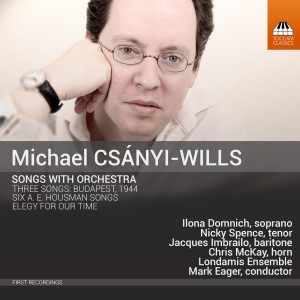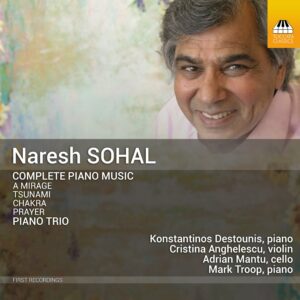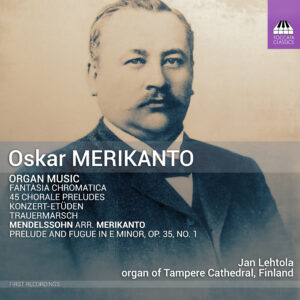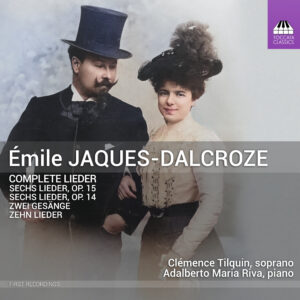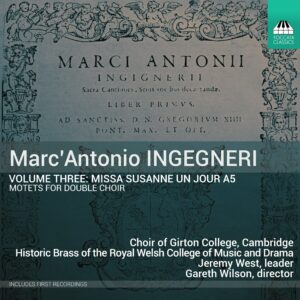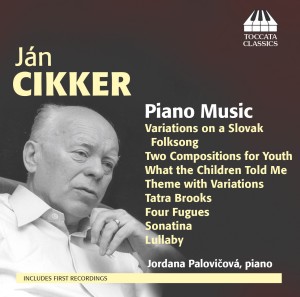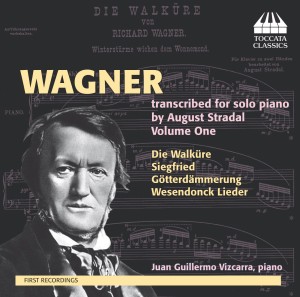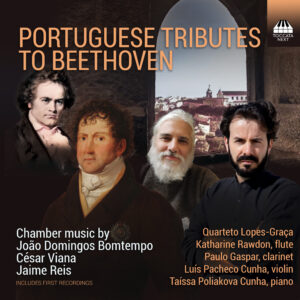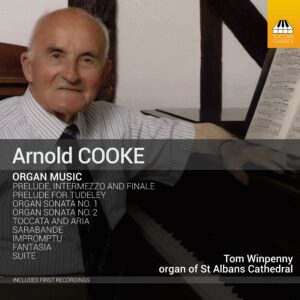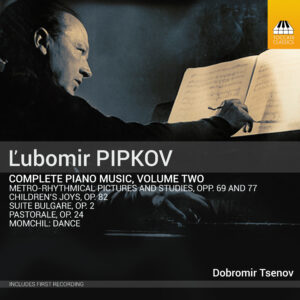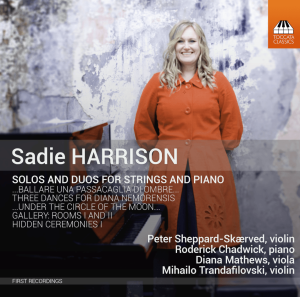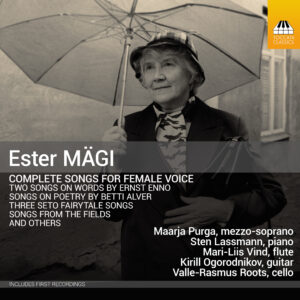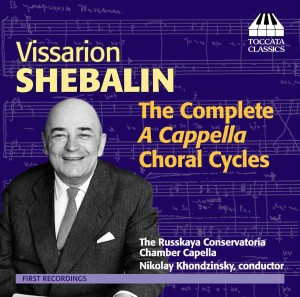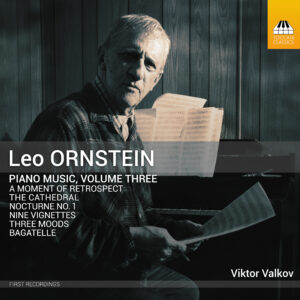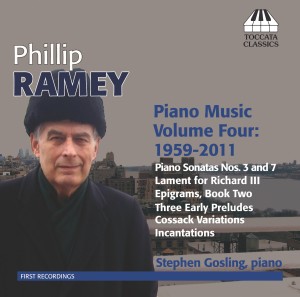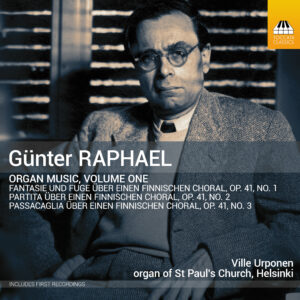Search Results for "Space Wolf: The First Omnibus mp3 torrent" – Page 4
Michael Csányi-Wills: Songs With Orchestra
These orchestral songs by the English composer Michael Csányi-Wills (b. 1975) all deal with the subject of loss. In Three Songs – Budapest, 1944 Csányi-Wills uses documentation from his own family history to shadow the fate of Hungary’s Jews under the Nazis. Mortality is an omnipresent theme in A. E. Housman’s Shropshire Lad poems. And Elegy for Our Time sets an anguished lament by Jessica d’Este, sparked by the death of her granddaughter in a car crash. Csányi-Wills responds to the stimulus of these dark texts with music that is hauntingly lyrical and elegiac.
Ilona Domnich, soprano
Nicky Spence, tenor
Jacques Imbrailo, baritone
Chris McKay, horn
Londamis Ensemble
Mark Eager, conductor
First recordings
Naresh Sohal: Complete Piano Music
The British-based Naresh Sohal, born in Punjab in 1939, was the first person of Indian origin to make his mark as a composer of western classical music, writing works that displayed an unusual kind of fusion – but not stylistic: his compositions often use the language of western modernism to explore the ideas of Hindu philosophy. The handful of piano pieces that he wrote between 1974 and his death in 2018 use musical analogies to address issues of perception, even existence itself, in a language that employs Xenakis-like extremes of dynamics and virtuosity, of clarity and density and of energy and calm.
Konstantinos Destounis, piano (Tracks 1–5)
Cristina Anghelescu, violin (Track 6)
Adrian Mantu, cello (Track 6)
Mark Troop, piano (Track 6)
Oskar Merikanto: Organ Music
Oskar Merikanto (1868–1924) made an enormous contribution to music-making in Finland, and to organ music in particular, as teacher, virtuoso performer and authority on performance practice, reforming the approach to the organ in both church and concert- hall. It was thought that all of his organ music was known and recorded, but recent discoveries have added a number of previously unsuspected works to his catalogue: a striking concert fantasia, an early funeral march, some pedal studies, a vast series of chorale preludes – some of them beautifully crafted miniatures, others only aphoristic ideas – and an organ transcription of a piano piece by Mendelssohn. This release is timed to mark the centenary of his death, on 17 February 1924.
Jan Lehtola, organ of Tampere Cathedral, Finland
Émile Jaques-Dalcroze: Complete Lieder
The Swiss composer Émile Jaques-Dalcroze (1865–1950) is best remembered for his development of Eurhythmics, which teaches the appreciation of music through movement. This first-ever complete recording of all his German-language Lieder – setting folksongs as well as more recent Romantic poetry – shows him bridging both French and German traditions with a style somewhere between Fauré and Brahms. Written early in Jaques- Dalcroze’s career, these songs span a wide range of emotions, from innocent rural idylls to the contemplation of existential pain
and heartache.
Clémence Tilquin, soprano
Adalberto Maria Riva, piano
Marc’ Antonio Ingegneri, Volume Three: Missa Susanne un jour a5
The Cremonese composer Marc’Antonio Ingegneri (c. 1535/36–92) is chiefly remembered as the teacher of Claudio Monteverdi while, for well nigh 500 years, his own achievements were left to sit in the shadows. This third in a series of pioneering recordings from the Choir of Girton College, Cambridge, reveals Ingegneri to have been one of the masters of his age, writing music of breathtaking richness and beauty: the works heard here combine learned, intricate counterpoint with the kind of sheer sonic thrill that brings a shiver of physical excitement. It is, of course, religious music, but it is also extraordinarily passionate, to a degree not previously heard, nor for centuries to come, until the rise of the great Romantic choral works.
Choir of Girton College, Cambridge (1, 2, 4–6, 9–12, 16)
Historic Brass of the Royal Welsh College of Music and Drama (1–7, 9–14)
Jeremy West, leader (3)
Emily Nott, organ (8)
Felix Elliott, organ (15)
Gareth Wilson, director
Ján Cikker: Piano Music
Ján Cikker (1911-89) was one of the leading Slovak composers of the twentieth century, with no fewer than nine operas to his credit. Cikker was also a fluent pianist and his piano music — little known even in his native Slovakia (this disc features several first recordings) — sits downstream from Szymanowski and Janáček, similarly blending folk influences with an echo of French impressionism.
Jordana Palovičová, piano
Wagner: Transcriptions for solo piano by August Stradal, Volume One
The Czech-born pianist and writer August Stradal (1860-1930) — a student of Bruckner and disciple of Liszt — was one of the more prolific transcribers of the nineteenth and earlier twentieth centuries, producing a vast quantity of piano music, including Liszt's orchestral works, most of the Bruckner symphonies, a good deal of the Baroque (not least a huge amount of Bach) and much more, most of it phenomenally difficult to play. This series of recordings presents his Wagner transcriptions, cast in the best barnstorming virtuoso tradition.
Juan Guillermo Vizcarra, piano
Portuguese Tributes to Beethoven
These three compositions by three Portuguese composers pay direct and indirect tribute to the music of Beethoven. The Piano Quintet by João Domingos Bomtempo was written in the style of the Viennese Classical mainstream even as Beethoven was changing its direction. The two works by César Viana and Jaime Reis both have distant roots in Beethoven but pay their homage in very different styles, one using relatively traditional language and the other more radical – as was Beethoven himself, of course.
Quarteto Lopes-Graça (Tracks 1–8)
Eliot Lawson and Luís Pacheco Cunha, violins
Isabel Pimentel, viola
Catherine Strynckx, cello
Katharine Rawdon, flute (Track 9)
Paulo Gaspar, clarinet (Track 9)
Luís Pacheco Cunha, violin (Track 9)
Taíssa Poliakova Cunha, piano
Arnold Cooke: Organ Music
The music of Arnold Cooke, born in Yorkshire in 1906, had already fallen into neglect by the time of his death 99 years later. Cooke was a prolific composer, with two operas, six symphonies, numerous concertos and a generous amount of chamber music to his credit – nor did he neglect the organ, as this album of his major organ pieces reveals. Cooke’s style owes much to his teacher, Hindemith, not least since both men were natural contrapuntists, although there are also points of contact with Bartók and Shostakovich, and occasional touches of Walton’s ceremonial sparkle and no-nonsense grandeur.
Tom Winpenny, organ of St Albans Cathedral
Ľubomir Pipkov: Complete Piano Music, Volume Two
Ľubomir Pipkov (1904–74) was one of the leading members of the so-called ‘second generation’ of Bulgarian composers. In later life he became fascinated with the ancient heritage of Bulgarian folk-music, producing a series of what he called ‘metro-rhythmical studies’ – piano miniatures that combine melodic immediacy and rhythmic complexity, with a character that might be loosely characterised as sounding like ‘Prokofiev meets Bartók in the Balkans’. Indeed, Pipkov saw in the irregular rhythms of Bulgarian folk-dance a parallel with the rhythmic experimentation in contemporary composers like Debussy, Ravel and Stravinsky.
Dobromir Tsenov, piano
Sadie Harrison: Solos and Duos for Strings and Piano
The Australian-British Sadie Harrison is no ordinary composer: she is also an archaeologist and a professional gardener. So it is hardly surprising that a fascination with historical artefacts and biological processes filters into her music. The instrumental miniatures on this recording are both slow and brutal, some of them mirroring ancient worlds and natural phenomena and others taking their starting point in the paintings of Brian Graham and Peter Sheppard Skærved, expressing visual and textural ideas in sound.
Peter Sheppard-Skærved, violin; Roderick Chadwick, piano; Diana Mathews, viola; Mihailo Trandafilovski, violin;
Ester Mägi: Complete Songs for Female Voice
For the latter part of her long life, Ester Mägi (1922–2021) was known as ‘the First Lady of Estonian music’, her modest, charming disposition endearing her to all who met her. But her music reveals the true strength of her personality, and this first complete recording of her songs for female voice – over half a century of compositional activity – covers a striking emotional range, from the ambivalent feelings of falling in love to dramatic ritual invocations of startling force and power. Many of the earlier songs are openly romantic, but Mägi soon began to tap into the hypnotic energy of Estonian runic folksong, with its echoes of village life and its incantations intended to placate a hostile environment.
Maarja Purga, mezzo-soprano
Valle-Rasmus Roots, cello
Mari-Liis Vind, flute
Kirill Ogorodnikov, guitar
Sten Lassmann, piano
Vissarion Shebalin: The Complete A Cappella Choral Cycles
The Siberian-born Vissarion Shebalin (1902-63) is best known for his instrumental music, which includes five symphonies and nine string quartets, some of which have been heard on CD, but this is the first recording of the eight delightful, and very Russian, choral cycles he wrote from 1949. Shebalin had to endure much hardship: along with Shostakovich, a close friend and colleague, he was one of the composers condemned in the infamous 1948 Party congress in Moscow; and in later life he fought to overcome a series of crippling strokes. These tribulations he faced with understated but unshakable optimism, as these touching choruses reveal.
Russkaya Conservatoria Chamber Capella, choir
Nikolay Khondzinsky, conductor
Leo Ornstein: Piano Music, Volume Three
Leo Ornstein is as well known for his extraordinary longevity as for his music: he was born in Ukraine in 1893 and died in Wisconsin in 2002, aged at least 108. His generous output of music, much of it for the piano, his own instrument, remains poorly known, although it can stand shoulder to shoulder with that of many better-known names. Some of the pieces here – which cover a span of over 60 years – have their roots in Debussy, Skryabin and Szymanowski, but Ornstein welds those influences into an edgy, energetic language very much his own. The Three Moods of c. 1914 are anger, grief and joy, but there is strength of feeling in all the music to be heard here. Indeed, the Nine Vignettes bear a misleading title: they are substantial and powerful virtuoso essays which can flare up into moments of startling power and violence; hitherto unknown, they constitute a major contribution to the piano literature.
Viktor Valkov, piano
Phillip Ramey: Piano Music, Volume Four: 1959-2011
The piano music of the American composer Phillip Ramey (born in 1939) is rooted in the motoric athleticism of Prokofiev and Bartók, tempered with sober lyricism, spicy modernist dissonance and a fresh approach to the grand Romantic gesture. This fourth Toccata Classics album includes the virtuosic Cossack Variations, the mercurial Epigrams, Book Two and Lament for Richard III, a dramatic character-study of a famous historical villain. Two sonatas add further substance to a varied programme: No. 3, serially inflected and culminating in a barbaric finale; and No. 7, infused with declamatory rhetoric, quirky rhythm and engaging melody.
Stephen Gosling, piano
Günter Raphael: Organ Music, Volume One
In the 1930s, as Günter Raphael (1903–60) found doors closing in his native Germany – he was half-Jewish – he was accorded a warm reception in Finland, where his music was heard in a series of broadcast concerts. There was a family connection, too: Raphael’s grandfather had taught Sibelius in Berlin. Raphael acknowledged his welcome by incorporating Finnish material into his music, and his Op. 41 is a monumental organ triptych based on Finnish chorales, with two towering contrapuntal edifices either side of a Baroque suite.
Ville Urponen, organ of St Paul’s Church, Helsinki
Stay In the Know
JOIN THE TOCCATA NEWSLETTER
"*" indicates required fields
By visiting our site, you agree to our privacy policy regarding cookies, tracking statistics, etc.
